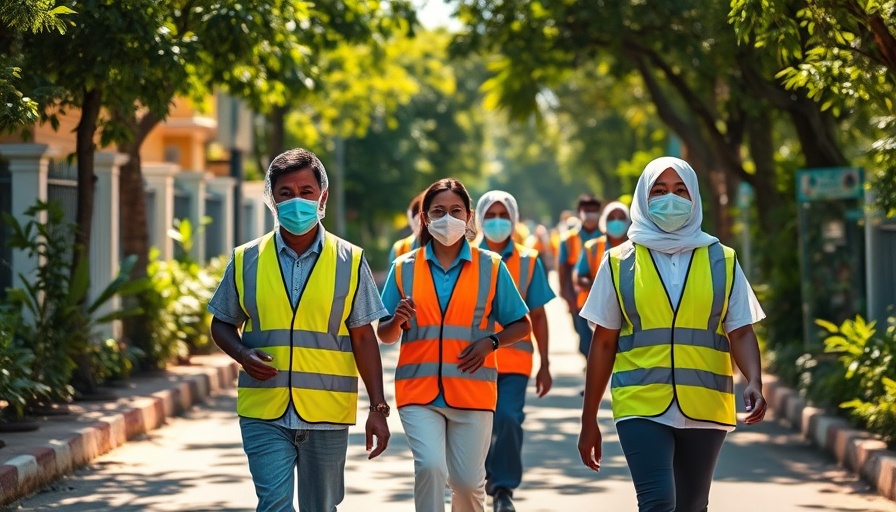
Unmasking the Marin Spring Allergy Season
As spring unfolds in Marin County, allergy sufferers are poised to confront yet another challenging season. With pollen levels rising higher each year, residents are now more aware than ever of the environmental shifts that are making spring allergies more severe and prolonged. According to allergist Dr. Schuman Tam, pollen has already begun its assault with grass and juniper varieties taking center stage. The importance of this seasonal phenomenon cannot be overstated, as it affects approximately 25% of adults and 20% of children in the United States, reflecting a significant public health concern.
Understanding the Historical Context of Allergies
Climate science has revealed that pollen seasons have become longer and more intense due to global warming. Research conducted by the USA National Phenology Network indicates that the onset of spring has been occurring earlier, and data from the Proceedings of the National Academy of Sciences indicates that pollen amounts across the nation increased by up to 21% between 1990 and 2018. This trend is pivotal as it shows not just a local issue in Marin but a widespread environmental change affecting allergy sufferers everywhere.
The Impact of Local Climate Patterns
Interestingly, in Northern California and Oregon, while general trends indicate higher pollen counts, local precipitation plays a significant role. The el Niño weather cycle, which brought wetter and warmer winters in previous years, might be responsible for the expected heightened pollen counts this spring, per Dr. Tam’s analysis. He anticipates a “pollen storm” this May, forecasting levels that could overwhelm even seasoned allergy sufferers.
What You Need to Know About Symptoms and Treatments
Hay fever, or allergic rhinitis, presents a range of distressing symptoms such as itchy eyes, runny noses, and sneezing. The increasing intensity of these allergies has led many to seek out remedies. Health professionals suggest the use of over-the-counter non-sedating antihistamines such as loratadine and cetirizine, which can provide relief without the unwanted drowsiness associated with older medications like diphenhydramine.
Innovative Treatments on the Horizon
For those whose symptoms remain unmanageable, visiting an allergy specialist may provide additional treatment options, including immunotherapy or allergy shots. These treatments require a commitment of time and consistency as they can involve monthly injections over several years, but the payoff often includes long-term relief from symptoms.
Community Vigilance Amid Rising Allergy Counts
The rising pollen counts are not just a personal health issue but a collective community challenge. As local healthcare providers report increases in patient visits due to severe allergy symptoms, it begs the question: how can the Marin community come together to support its members during allergy season? Public health messaging and community initiatives may be vital in providing information and resources for those affected.
Concluding Thoughts: Taking Action Against Allergies
As Marin County braces for a potentially severe allergy season, it’s essential for residents to educate themselves on symptoms, treatments, and preventive measures. If you're afflicted by seasonal allergies this spring, don't hesitate to consult your physician or a specialist. They can recommend the most effective strategies tailored to your individual needs. Keeping your windows closed, utilizing air purifiers, and maintaining cleanliness at home can also mitigate exposure to allergens.
Despite the challenges of spring allergies, staying informed and proactive can ease symptoms and improve overall wellbeing. If you're someone struggling with these conditions, consider reaching out to your healthcare provider for guidance.
 Add Row
Add Row  Add
Add 




 Add Row
Add Row  Add
Add 

Write A Comment